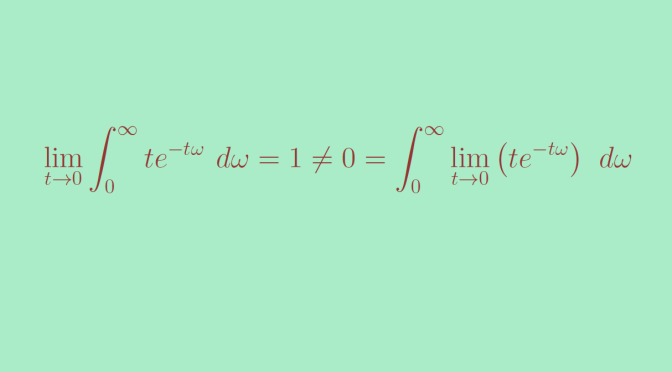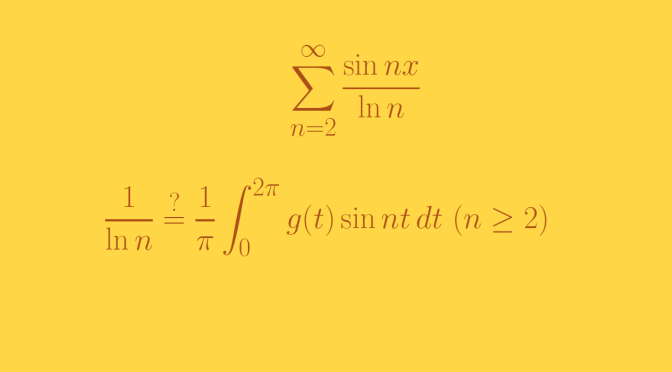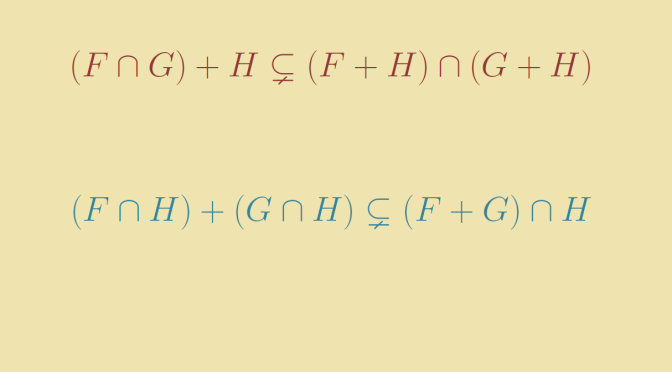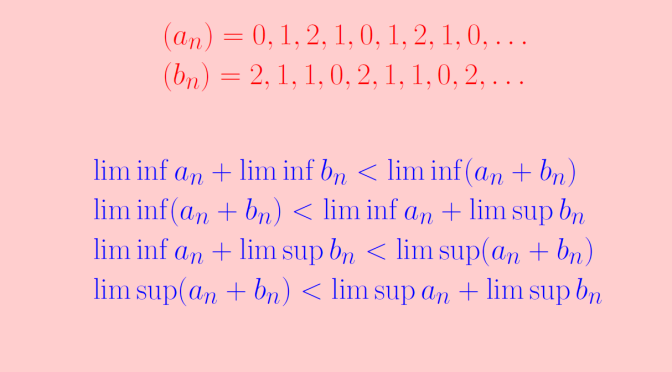We consider here a measure space \((\Omega, \mathcal A, \mu)\) and \(T \subset \mathbb R\) a topological subspace. For a map \(f : T \times \Omega \to \mathbb R\) such that for all \(t \in T\) the map \[
\begin{array}{l|rcl}
f(t, \cdot) : & \Omega & \longrightarrow & \mathbb R \\
& \omega & \longmapsto & f(t,\omega) \end{array}
\] is integrable, one can define the function \[
\begin{array}{l|rcl}
F : & T & \longrightarrow & \mathbb R \\
& t & \longmapsto & \int_\Omega f(t,\omega) \ d\mu(\omega) \end{array}
\]
Following theorem is well known (and can be proven using dominated convergence theorem):
THEOREM for an adherent point \(x \in T\), if
- \(\forall \omega \in \Omega \lim\limits_{t \to x} f(t,\omega) = \varphi(\omega)\)
- There exists a map \(g : \Omega \to \mathbb R\) such that \(\forall t \in T, \, \forall \omega \in \Omega, \ \vert f(t,\omega) \vert \le g(\omega)\)
then \(\varphi\) is integrable and \[
\lim\limits_{t \to x} F(t) = \int_\Omega \varphi(\omega) \ d\mu(\omega)\]
In other words, one can switch \(\lim\) and \(\int\) signs.
We provide here a counterexample showing that the conclusion of the theorem might not hold if \(f\) is not bounded by a function \(g\) as supposed in the premises of the theorem. Continue reading Continuity under the integral sign




